A Camry may not look like much, but depending on which model you’re looking at, you may be surprised by what you find under the hood. It’s one of the reasons why it’s also a NASCAR star.
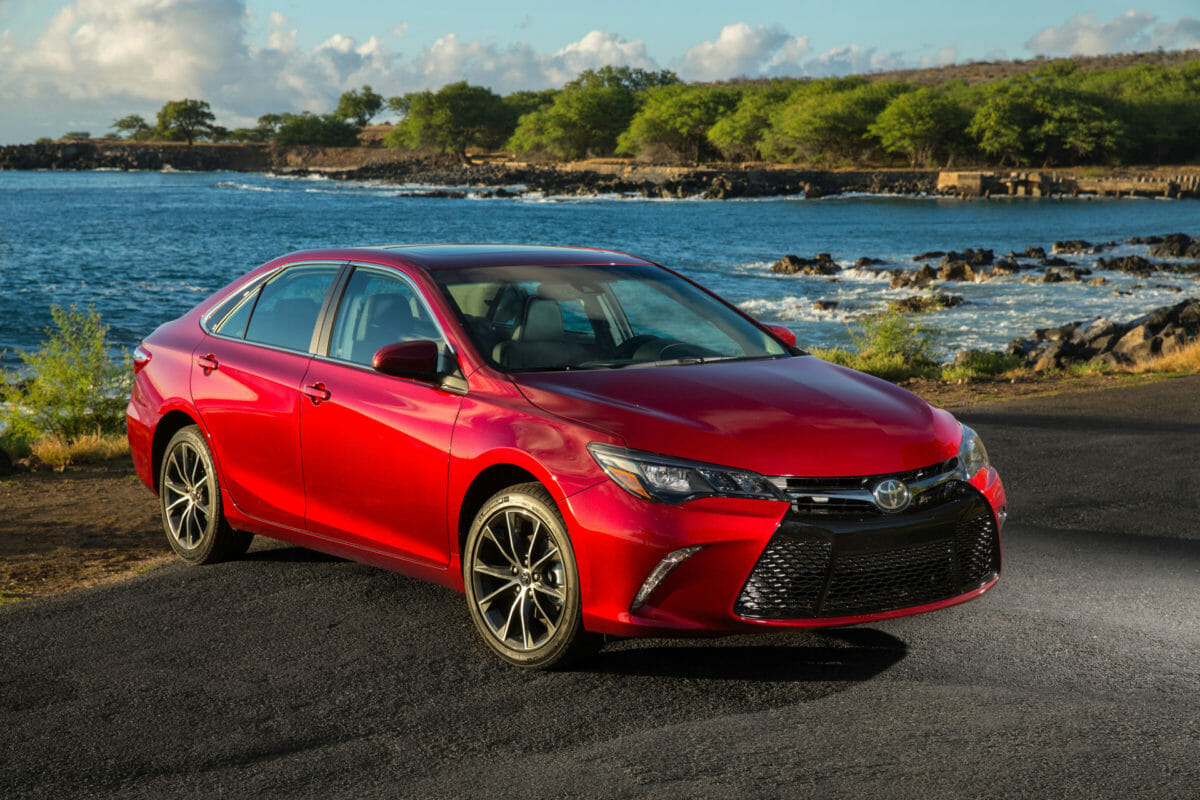
Despite being among the most popular vehicles in the U.S., the Toyota Camry is sort of a best-kept secret in the auto world. You see a hundred of these cars on the road every day, and you don’t really think much about them.
The exterior is usually kind of plain. The interior is nice, but nothing to write home about. You can see why they make for a solid family vehicle, but they’re not exactly the most exciting car on the road.
And then you find out that Kyle Busch has scored over one hundred NASCAR wins behind the wheel of a Camry, and you wonder if someone’s trying to pull a prank on you.
A Camry may not look like much, but depending on which model you’re looking at, you may be surprised by what you find under the hood. Many of these cars do roll off the assembly line packed with modest little compact i4s. But next time you hit the lot, take a closer look, and it could be hiding a 3.5L V6, making these little Toyotas more than meets the eye.
The Camry has been around for just about forty years now, and in that time we’ve seen just about everything packed under the hood from your basic inline-four and V6 engines to diesels and hybrids.
The Camry typically reports annual sales in the U.S. in the quarter-million to half-million unit range, and this popularity has a lot to do with the sheer range of engine options you have. Basically, there’s a Camry for everyone, whether you’re looking to hit the track or you just need a reliable point-A-to-point-B everyday driver.
The first Camry was produced in 1982, so there’s quite a bit of history to go over here, but we’ll do our best to cover everything you need to know about the Toyota Camry engine.
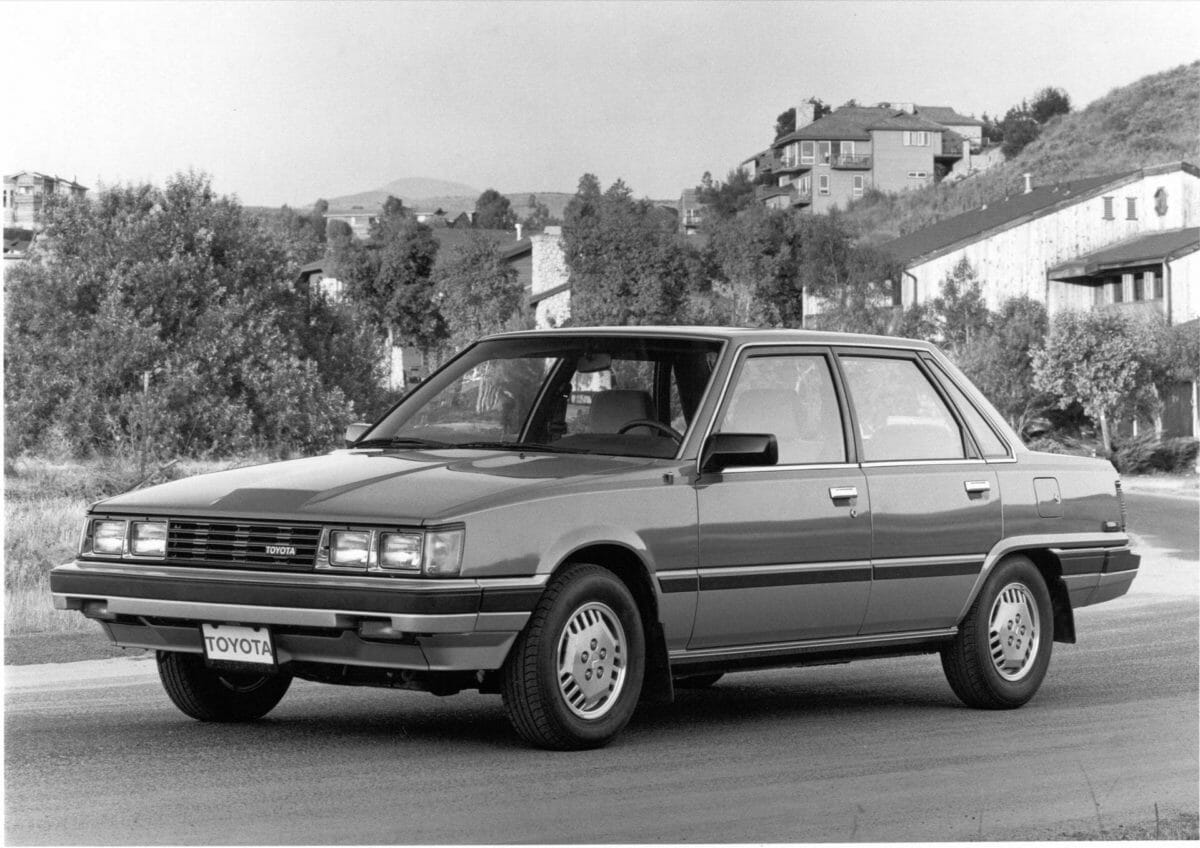
First-gen. Camry Engines (1982-1986)
In its first generation, the Camry was a pretty basic little compact, and sales started off slow in the U.S. The Camry finally hit six figures in America in 1985, with sales steadily climbing ever since.
“Underpowered” might be a fair term to use for a first-generation Camry. The toughest engine of the lineup was a 2.0L 5MT that topped out at 107 horsepower. This was a four-cylinder S-series engine with a 785.4 cubic inch displacement, and a top speed of 112 mph.
Other engines included a 1.8L 5MT reaching 90 hp, and a pair of diesel engines. These were a 1.8L TD 5MT reaching 73 hp, and a 2.0L reaching 84 hp.
The first-generation Camry was a handy little city car, but in terms of sheer power, it left a bit to be desired if you had any steep hills or dirt roads to traverse. Fortunately, the second-generation Camry would be a big step up in terms of horsepower and engine options.
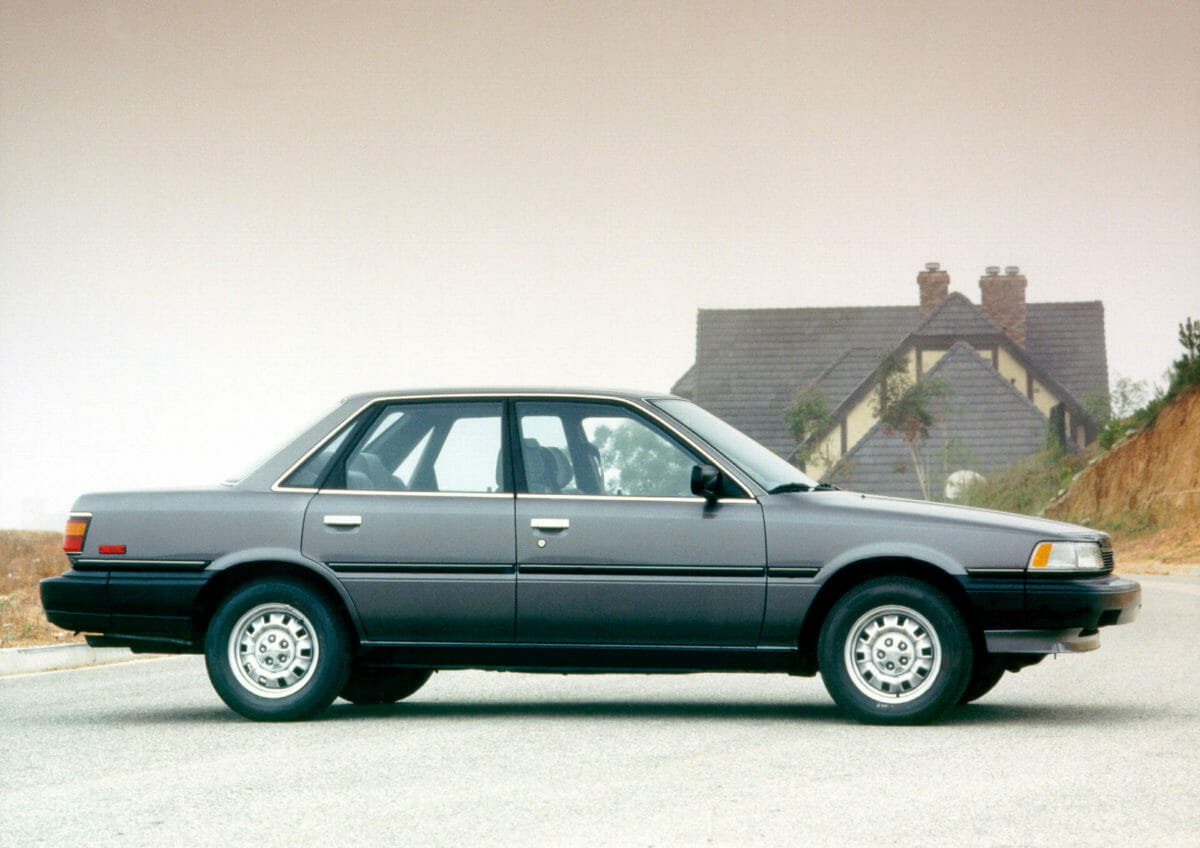
Toyota Camry’s First V6s (1986-1992)
By the Camry’s second-generation launch, the car was a proven hit, having exceeded 100,000 sales in the U.S. in 1985. Now Toyota had a little room to experiment, introducing sedan and hatchback models, and expanding the engine lineup.
Across the whole V20 lineup, Toyota offered five engine options, including an 84 hp 2.0 diesel, a 90 hp 1.8L, a 128 hp 2.0L, and the star of the show, a 160 hp 2.5L.
The 2.5L was a V6 2VZ-FE, part of Toyota’s VZ engine family. This was the first V6 for the nameplate, achieving a top speed of 145 mph, and you could say it was the birth of the Camry racecar, packing a surprising amount of power into a small body. A V20 Camry with a V6 engine was a compact that felt like a miniature muscle car.
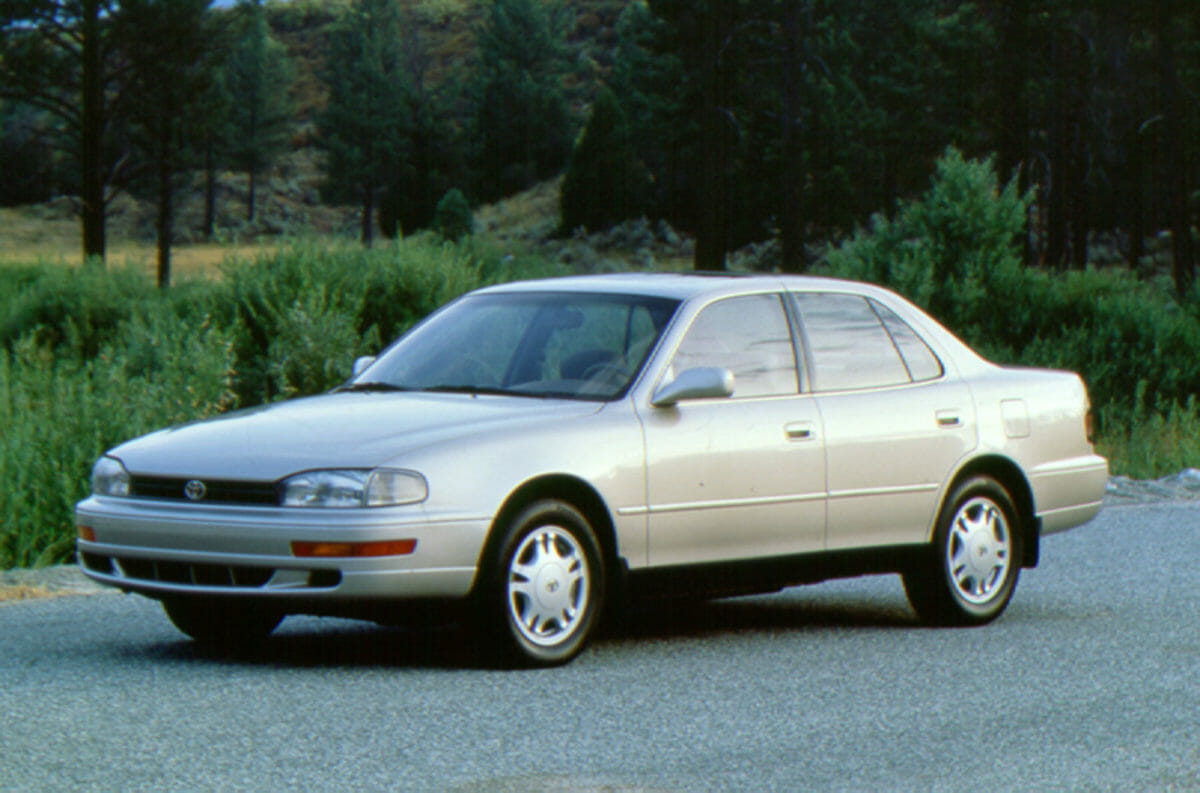
Camry’s Two Big Changes in the 1990s
In the early 1990s, the Camry would split off with Japan receiving the narrow-body V30, while North America and most other English-speaking countries received the wide-body models, starting with the XV10. This had to do with dimension regulations in the Japanese car market.
Basically, Japanese cars couldn’t be over a certain size, and ever since, you can generally expect the international version of a car to be a little longer and wider than the Japanese version.
Engine options remained largely the same regardless of whether you bought the car in Tokyo or Tennessee, with some exceptions that we’ll note as we go.
Beyond this, the 1990s saw two big changes for the Camry. First, we would see the last of the diesel-powered Camry, with the last one rolling off the assembly line in 1998. Second, this was the last decade of the Camry as a compact car. The mid-size Camry would slowly phase the compact out over the course of the decade, and by the new century, Camry would be a mid-size-only vehicle.
The first run of 1990s Camry cars saw a substantial power boost, with the 1991-1996 models being offered with a 136 hp 2.2L straight-4, or a 3.0L V6, delivering 188 hp. The 3.0L was an iron block 3VZ-FE, exclusive to the XV10 wide-bodies.
In 1993, the 3VZ-FE was swapped out for an all-aluminum 1MZ-FE V6, edging the horsepower up to 190. In Australia, you can find these mid-nineties V6 Camry wide-bodies under the Vienta nameplate. It’s the same car, they just changed the name and put the steering wheel on the other side.
The Camry that would close out the decade, the XV20, actually started developing as early as 1991. Development was then frozen until 1994, with the car eventually launching in late 1996, offered in sedan and station wagon builds.
The late-nineties Camry was offered with the same 2.2L i4 5S-FE and 3.0L V6 1MZ-FE engines seen in the mid-nineties models. These late-decade updates had less to do with the engine than with the body, interior and safety features.
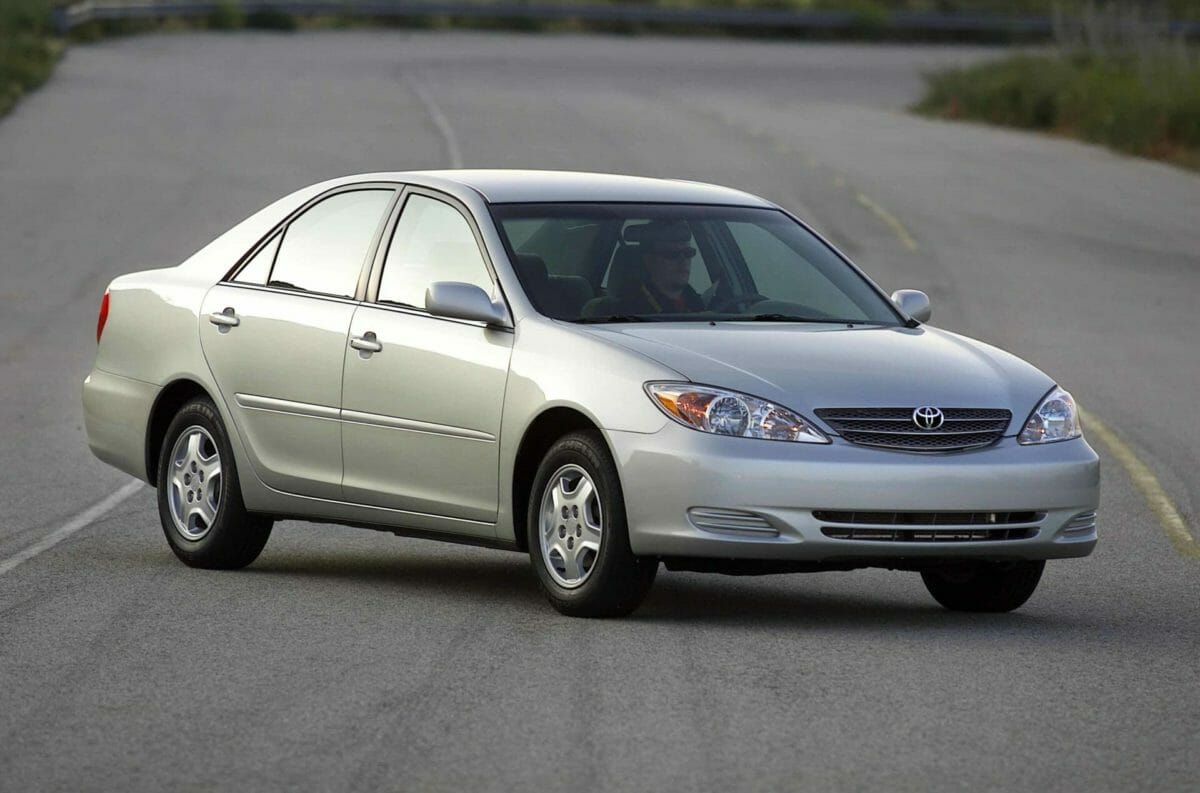
Toyota Camry Launches as a Larger Sedan
The American auto market had begun to shift towards SUVs throughout the nineties, and that shift would be complete by the new century. This left many automakers wondering what to do with their flagship vehicles. It was around this time when most full-size pickups started extending the size of their cabs with second-row seating and more interior features.
Toyota’s answer was to simply not compete directly with vehicles like the Ford Explorer in the first place, but to focus on what made the Camry unique. In 2001, they dropped the station wagon entirely and launched the new Camry as a larger sedan.
The engines saw an overhaul in 2003, and consumers had three options to pick from in the new Camry: a 154 hp 2.4L i4, a 190 hp 3.0L V6 (a return of the aluminum 1MZ-FE), and a 210 hp 3.3L V6 in the SE model, this last one being a brand new 3MZ-FE. You could call it the bigger, badder sequel to the 1MZ-FE.
This decade saw the first hybrid Camry in 2006, which carried a second-generation Hybrid Synergy Drive paired with a 2AZ-FXE i4 gas engine. The electric motor cranked out 40 hp while the 2AZ contributed 148 hp for a total of 188. The XV40 hybrid model ran until 2013.
While the SUV may have dominated the market throughout the 2000’s Toyota continued to pull strong numbers with the Camry, selling close to half a million units annually in the U.S. year after year. They even managed to set their all-time record of 473,108 units sold in 2008, proving that there was still a market for mid-size sedans in the age of the sports-utility vehicle. 2011 would mark the end of an incredible run that saw the Camry being crowned the best-selling car in the U.S.
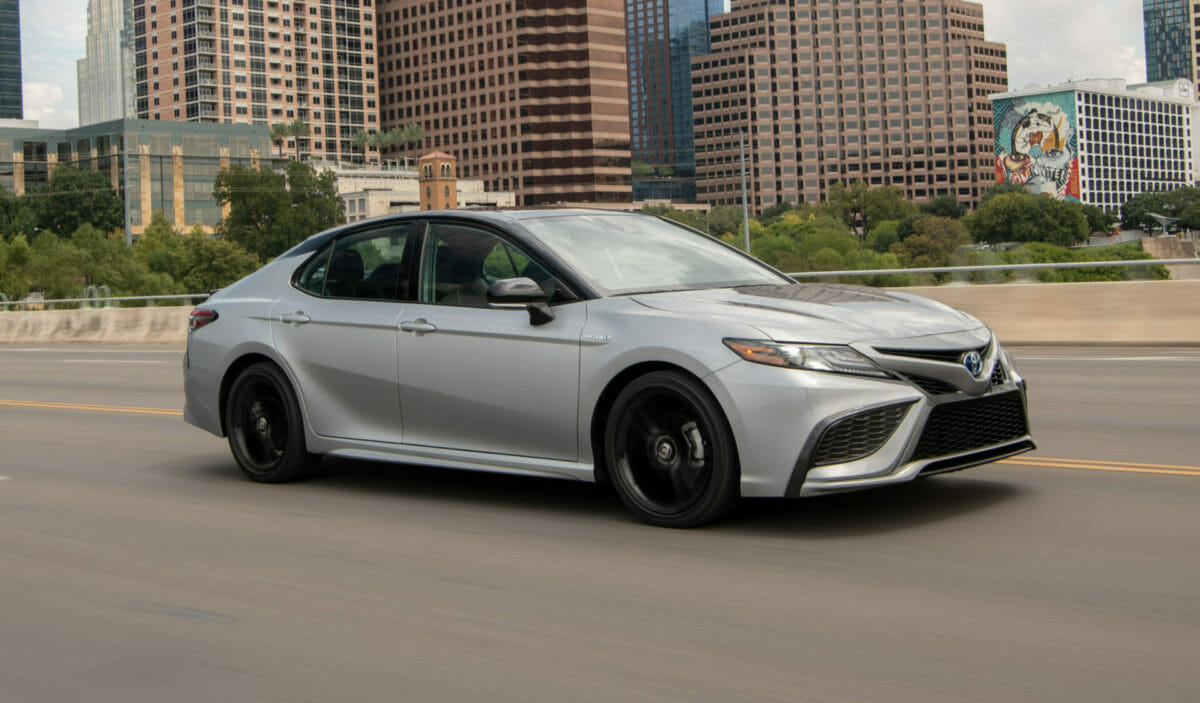
Toyota Camry Hybrids
2011 saw the introduction of the XV50 lineup, which ran until 2019. As with the XV40 lineup, the XV50 came with three engine options: a 200 hp 2.5L i4 hybrid Atkinson cycle engine, a 178 hp 2.5L gas-powered i4, and of course, a V6, a 3.5L boasting 268 hp and debuting with NASCAR.
The XV50s were, for the most part, running the same engines as the XV40s, but Toyota managed to squeeze some extra horsepower out of them with some clever engineering tweaks, like switching to electro-hydraulic power steering.
In 2014 the Camry saw an overhaul for the interior and exterior design, but nothing too exciting would happen under the hood until 2017, with the launch of the XV70 lineup that Toyota still manufactures today. The V6 was made ever more powerful with further engineering tweaks, reaching 301 hp, while the hybrid was cranked up to 208 hp.
Advances in electric motors aside, the Camry has essentially been using the same engine lineup for about ten years now, continually improving performance by optimizing how the car utilizes the power output.
According to Auto Week, there is a strong possibility that Toyota will be bringing an all-electric Camry to market in the near future. We’ll just have to wait and see what the future holds for the iconic sedan.
Photos: Toyota
